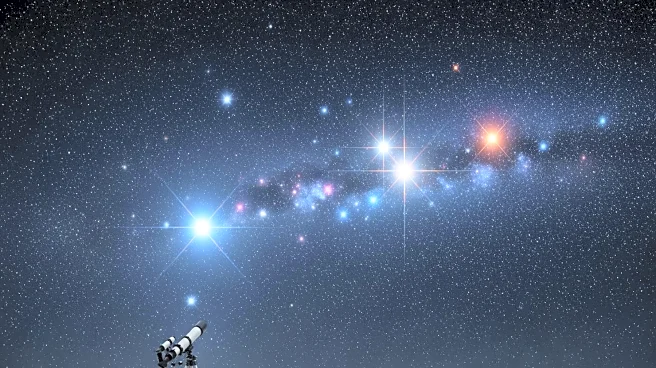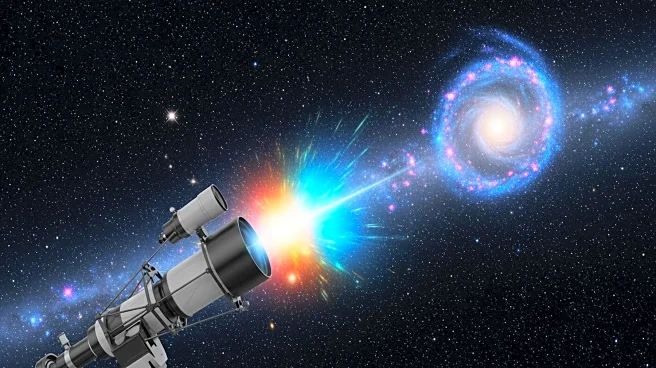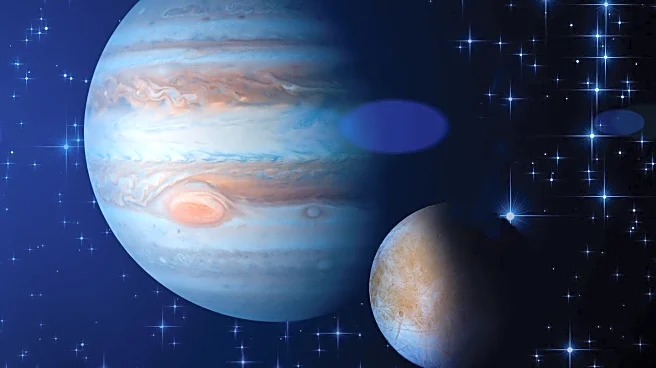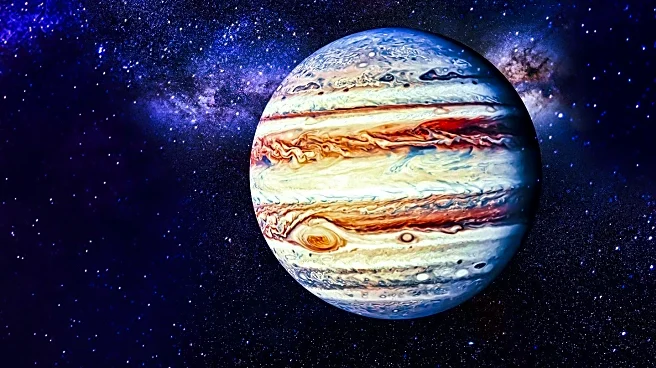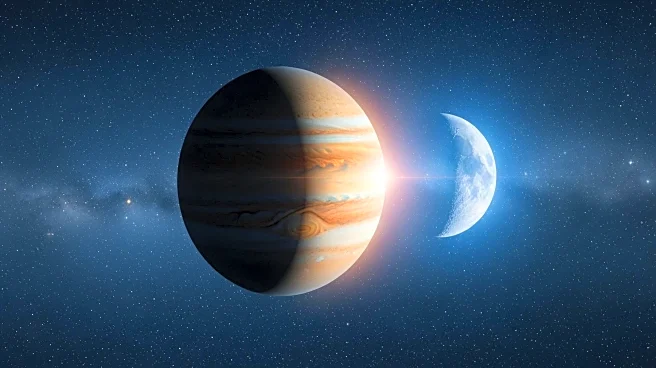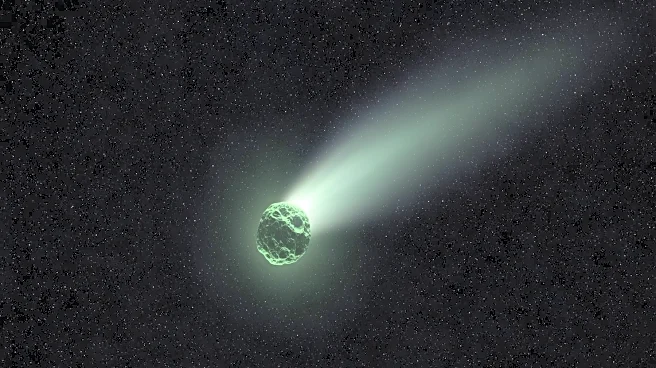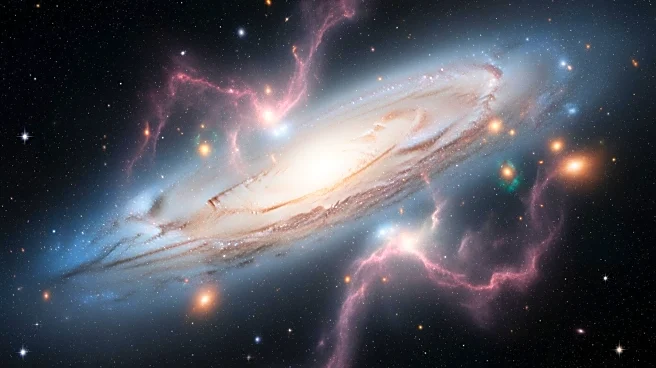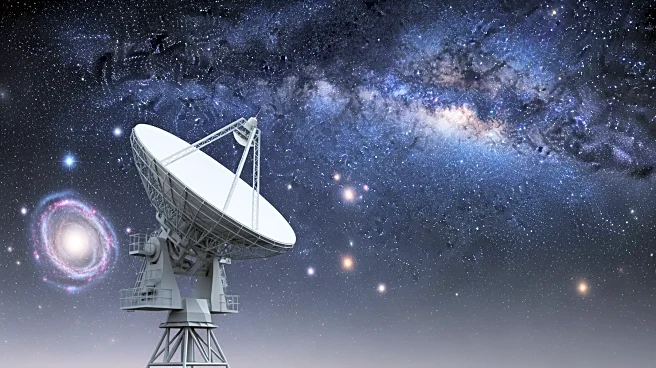What's Happening?
Wolf-Rayet stars, known for their massive size and luminous nature, are observable with small telescopes. These stars, characterized by their vigorous stellar winds and lack of hydrogen lines, represent the final evolutionary stage of massive O-type stars.
Notable examples include Gamma2 Velorum, visible in the Southern Hemisphere, and HD 190918, the brightest Wolf-Rayet star for Northern Hemisphere observers. These stars play a significant role in galactic chemical evolution and are often associated with supernovae and gamma-ray bursts.
Why It's Important?
The observation of Wolf-Rayet stars provides valuable insights into the life cycle of massive stars and their impact on the galaxy. These stars contribute to the enrichment of the interstellar medium with heavier elements, influencing the formation of new stars and planetary systems. Understanding their characteristics and behavior helps astronomers study the processes leading to supernovae and the distribution of elements in the universe. This knowledge is crucial for advancing astrophysical theories and models.
